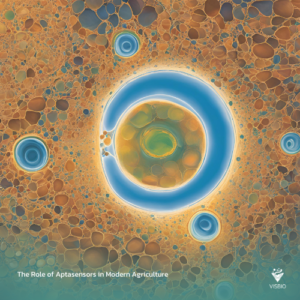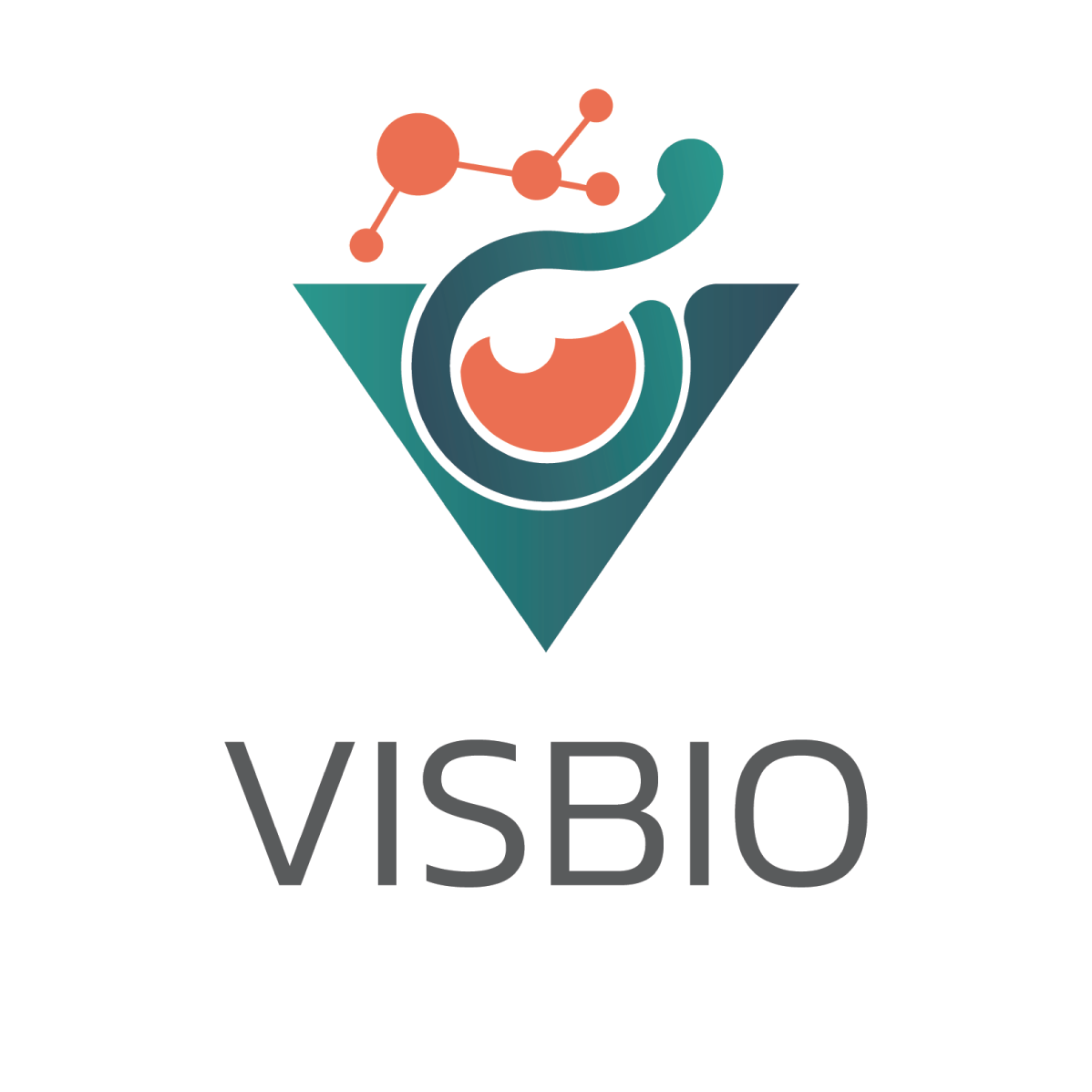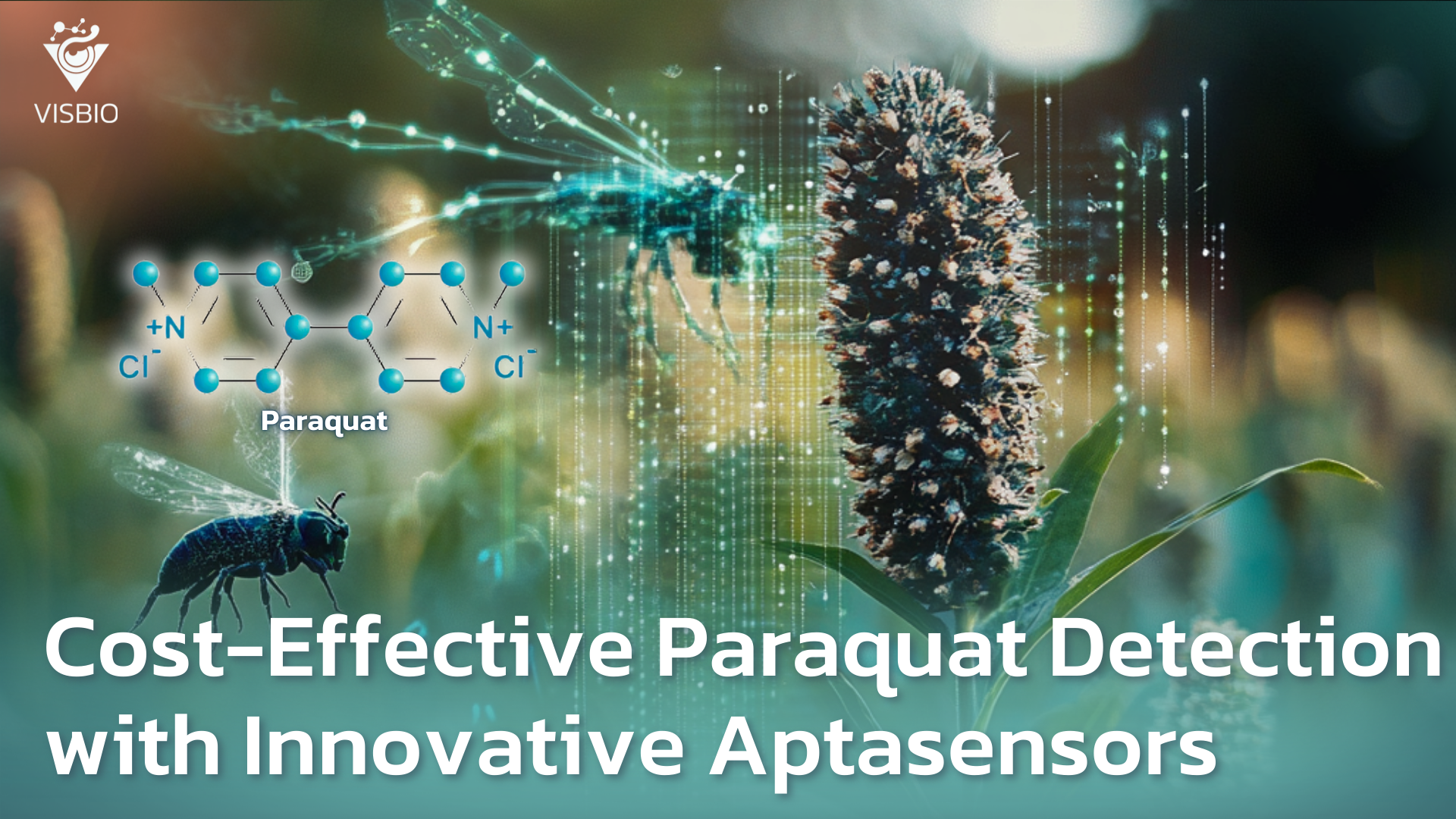The Need for Advanced Pesticide Detection

In the agricultural industry, paraquat remains a widely used herbicide despite its associated health risks, including fatal poisoning and potential links to neurodegenerative diseases like Parkinson’s. As its use continues, particularly in countries like Thailand, there is a pressing need for reliable, rapid, and cost-effective detection methods. Current technologies, such as high-performance liquid chromatography (HPLC) and mass spectrometry, are effective but often require expensive equipment and extensive sample preparation. This has led to the development of innovative solutions like aptasensors, which offer a promising alternative for paraquat detection through a simpler, more accessible approach.

The Role of Aptasensors in Modern Agriculture
What Are Aptasensors?
- Aptasensors are biosensors that use aptamers—short, single-stranded DNA or RNA molecules—as their recognition element. These aptamers can fold into specific three-dimensional shapes, allowing them to bind selectively to a target molecule with high affinity. The Systematic Evolution of Ligands by Exponential Enrichment (SELEX) process is typically used to identify these aptamers. Unlike antibodies, aptamers are cheaper to produce, easier to modify, and more stable, making them ideal for field applications in environmental monitoring.
Gold Nanoparticle Colorimetric Methods

- In this study, the researchers developed an aptasensor that utilizes the colorimetric properties of gold nanoparticles (AuNPs) for the detection of paraquat. When paraquat binds to the specific aptamer, it causes the AuNPs to aggregate, leading to a visible color change from red to purple. This color change can be easily observed by the naked eye or measured using UV-Vis spectrometry, making the method highly accessible and straightforward for on-site detection.
Development and Application of the Aptasensor
The SELEX Process and Aptamer Selection
- The researchers began by using the SELEX process combined with capillary electrophoresis to select a high-affinity aptamer for paraquat. After several rounds of selection, aptamer 77F was identified as the most effective, exhibiting a strong and specific binding to paraquat. The selected aptamer was then tested for specificity and sensitivity using the colorimetric
Colorimetric Detection: Simple and Effective
- The colorimetric assay developed in this study showed that aptamer 77F could detect paraquat at concentrations as low as 0.268 mg/mL. This level of sensitivity is comparable to, and in some cases better than, more complex methods like surface plasmon resonance (SPR) sensors. The aptasensor not only demonstrated high specificity for paraquat but also did not react with other common pesticides, confirming its potential for accurate detection in real-world scenarios.
What Does This Mean for Your Business?
Revolutionizing Pesticide Management

The findings from this research offer a groundbreaking approach to pesticide detection that can significantly enhance agricultural practices. For businesses involved in agriculture, food production, or environmental safety, the ability to quickly and accurately detect paraquat residues is crucial. Traditional detection methods are often expensive and require specialized equipment, making them impractical for widespread use. The aptasensor developed by Dr. Kiattawee Choowongkomon and his team provides a cost-effective, easy-to-use alternative that can be deployed directly in the field, reducing the need for costly laboratory analysis.
Enhancing Product Safety and Compliance
 With increasing regulations around pesticide use, ensuring that your products are free from harmful residues is more important than ever. This aptasensor technology allows for rapid on-site testing, helping businesses comply with safety standards and avoid potential legal issues. By integrating this innovative detection method into your operations, you can enhance the safety and quality of your products, giving you a competitive edge in the market.
With increasing regulations around pesticide use, ensuring that your products are free from harmful residues is more important than ever. This aptasensor technology allows for rapid on-site testing, helping businesses comply with safety standards and avoid potential legal issues. By integrating this innovative detection method into your operations, you can enhance the safety and quality of your products, giving you a competitive edge in the market.
Reducing Costs and Increasing Efficiency
 The simplicity and low cost of the colorimetric aptasensor mean that businesses can conduct frequent testing without incurring significant expenses. This not only helps in maintaining high product standards but also reduces the turnaround time for testing, allowing for quicker decision-making and response to potential contamination issues. Ultimately, this technology can help you streamline your operations, reduce costs, and improve your bottom line.
The simplicity and low cost of the colorimetric aptasensor mean that businesses can conduct frequent testing without incurring significant expenses. This not only helps in maintaining high product standards but also reduces the turnaround time for testing, allowing for quicker decision-making and response to potential contamination issues. Ultimately, this technology can help you streamline your operations, reduce costs, and improve your bottom line.
A New Era of Pesticide Detection
The development of a colorimetric aptasensor for paraquat detection represents a significant advancement in the field of environmental monitoring. This innovative method offers a combination of high sensitivity, specificity, and ease of use, making it an ideal tool for on-site detection in agricultural settings. As the global community continues to grapple with the risks posed by paraquat and other toxic herbicides, technologies like these aptasensors could play a crucial role in safeguarding public health and ensuring food safety.
Partner with Us to Pioneer Future Innovations
If your organization is looking to stay at the forefront of agricultural and environmental safety, we invite you to collaborate with us. Dr. Kiattawee Choowongkomon and his team are leading the way in developing cutting-edge biosensors that promise to transform how we monitor and manage pesticide use. Contact us today for a free consultation and discover how our research can be applied to your needs.
About the Author
 Associate Professor Dr. Kiattawee Choowongkomon is a renowned expert in biochemistry, specializing in protein engineering, biosensors, and diagnostic tool development. Through research collaborations with leading institutions both in Thailand and internationally, Associate Professor Dr. Kiattawee is committed to advancing scientific research with real-world applications.
Associate Professor Dr. Kiattawee Choowongkomon is a renowned expert in biochemistry, specializing in protein engineering, biosensors, and diagnostic tool development. Through research collaborations with leading institutions both in Thailand and internationally, Associate Professor Dr. Kiattawee is committed to advancing scientific research with real-world applications.
About the Research
The research paper, Aptasensor for Paraquat Detection by Gold Nanoparticle Colorimetric Method, highlights the innovative use of aptamers and gold nanoparticles in creating a simple yet highly effective method for detecting the herbicide paraquat.
For further reading, the full paper is available at DOI: 10.1080/03601234.2021.1888615.


